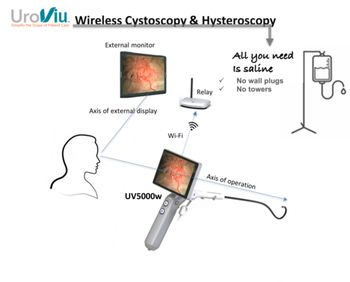
Long-term solutions for physician burnout
. Physicans are more likely to commit suicide than a member of the general population and 73% of physicians would not recommend the profession to their children, according to a recent report.
Ten years ago, when Bridget Duffy, MD, presented a plan for work-life balance for physicians and nurses to alleviate burnout, it was scoffed at by the CEO of the health system. The executive told her that if doctors and nurses weren’t strong enough to deal with lack of work-life balance, they shouldn’t be working there.
Blog:
Fast forward to today, and attitudes about physician burnout are changing, and for good reason, says Duffy, now the chief medical officer for Vocera Communications, a clinical communications provider. Physicans are more likely to commit suicide than a member of the general population and 73% of physicians would not recommend the profession to their children, according to the report,
“Physician burnout is often reported and talked about,” William Maples, MD, chief medical officer of Professional Research Consultants Inc. and one of the architects of the report, said in a statement. “However, until now, real solutions for addressing burnout have proven to be elusive-in part because physicians themselves haven’t been involved in developing or implementing them.”
Duffy says that discussing burnout can be a touchy subject. The word “burnout” is often associated with weakness by physicians, and no one wants to be seen as not tough enough to do their job. But she says it’s time to change the attitude about burnout by taking a more clinical look at its causes and results.
“I meet more and more physicians every day my age who want to quit, retire early, are burnt out and want to do something else,” Duffy says. “I think it’s a crisis in America today.”
She says the investment in technology to find cost-savings and efficiencies in healthcare has been well-intentioned, but the one piece that has been overlooked is the condition of the workforce.
Duffy says it’s time to create a metric that measures physician well-being, resiliency or burnout. And this isn’t just about the benefits for physicians-it’s also about patients. “There’s great data that shows when you have burned-out doctors and nurses, there are greater errors in the operating room and elsewhere in healthcare,” she says.
Related:
The metric would establish a baseline. When other initiatives, such as new technology or regulatory changes are implemented, it would be possible to see whether the change is helping or hurting physicians’ well-being. “Every other industry understands that if you have a healthy, loyal, engaged workforce, you have an improved bottom line and loyal customers. We’ve just been slow to get to that in healthcare,” she says.
Another area the report made recommendations for was technology. Duffy says technology is a part of the problem, but it’s also a part of the solution. While it can be helpful, partnerships between healthcare and private companies need to be made that will move doctors away from being data-entry clerks. “We’re interested in finding technology that helps us listen to and hear the patient’s story, told directly to us looking in their eyes versus us typing with our backs to them,” says Duffy.
The report offers 16 specific recommendations aimed at reducing the causes of burnout and increase physician well-being. While many are high level, such as changing the way doctors are trained, Duffy encourages physicians to get involved in effecting change for the good of the profession. Whether it’s tackling problems within their organization or getting involved in a larger community to combat the issues behind burnout, she says involvement is key.
Opinion:
Duffy says she’s seeing positive changes as a greater focus is placed on physician well-being “In the past, the initiatives were to be the highest quality, most efficient or lowest cost, but those aren’t enough to differentiate a hospital or to improve outcomes,” says Duffy. “Now, there’s an interest in the movement about making the human experience the top priority. The ‘ah-ha’ moment I had ten years ago was that you can’t focus on the patient experience until you first focus on the staff experience.”
Newsletter
Stay informed and empowered with Medical Economics enewsletter, delivering expert insights, financial strategies, practice management tips and technology trends — tailored for today’s physicians.



















